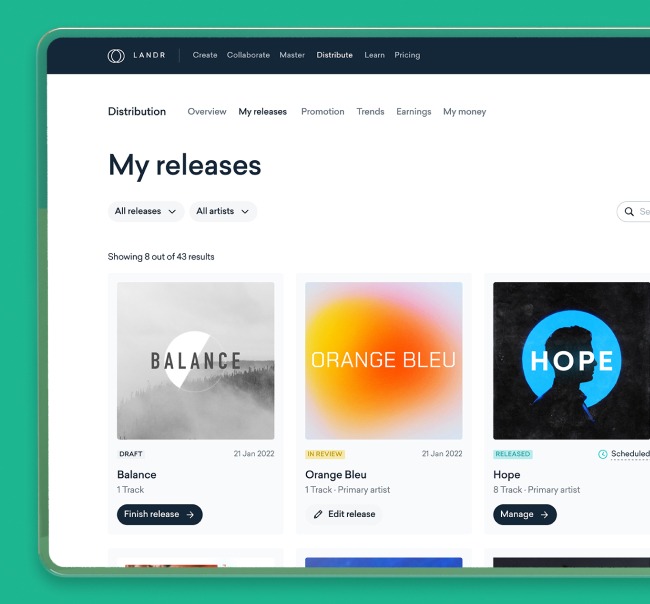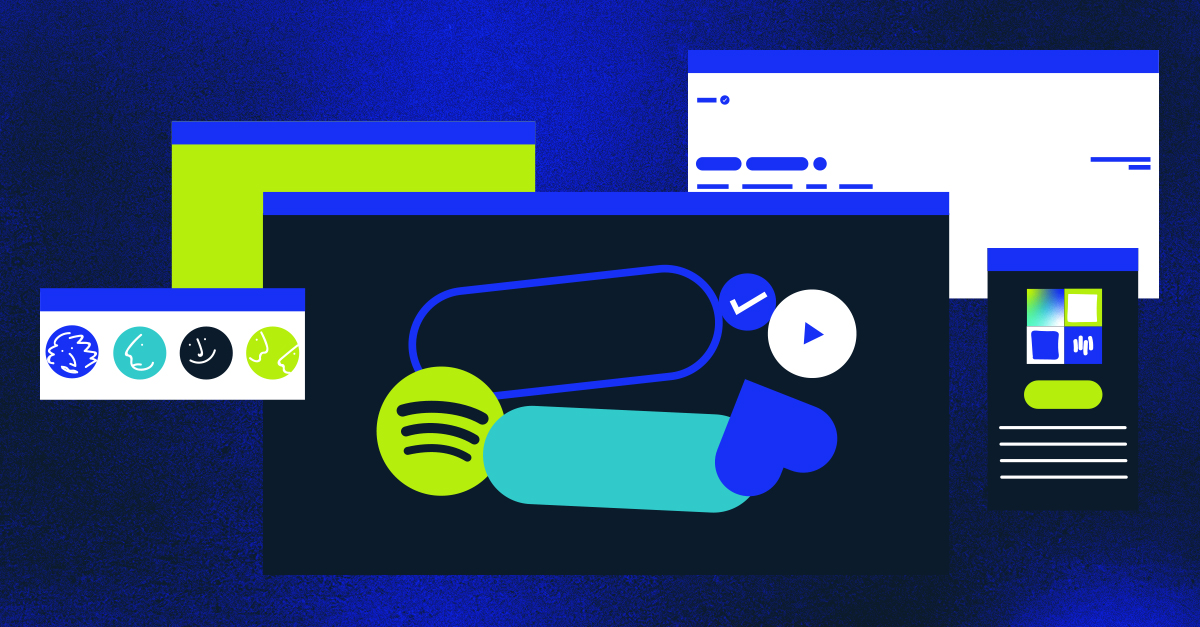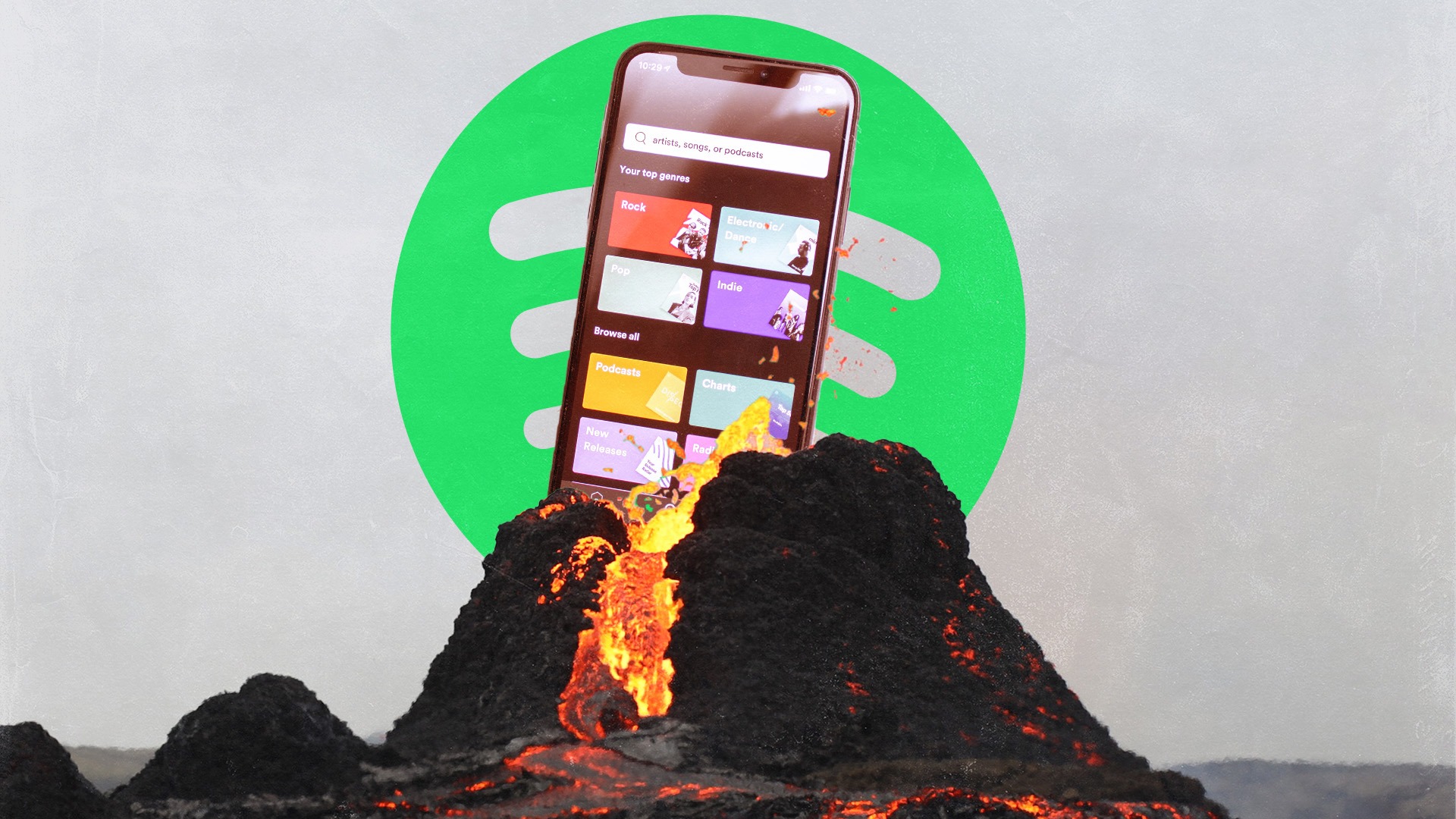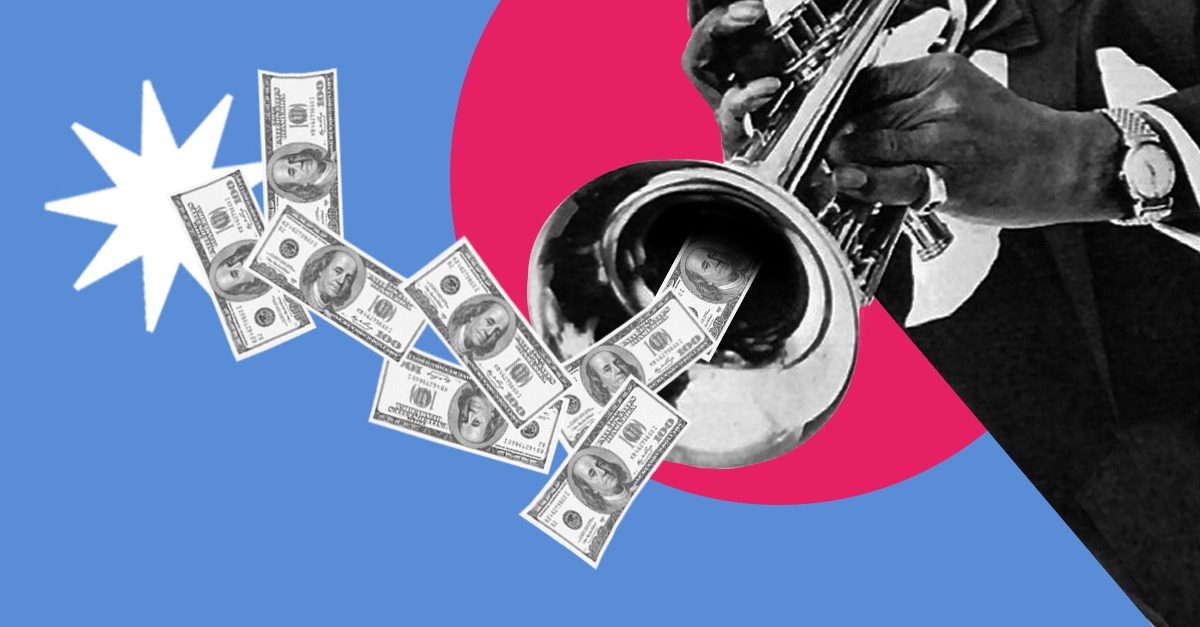Spotify Merch: 5 Tips to Boost Merch Sales on Spotify
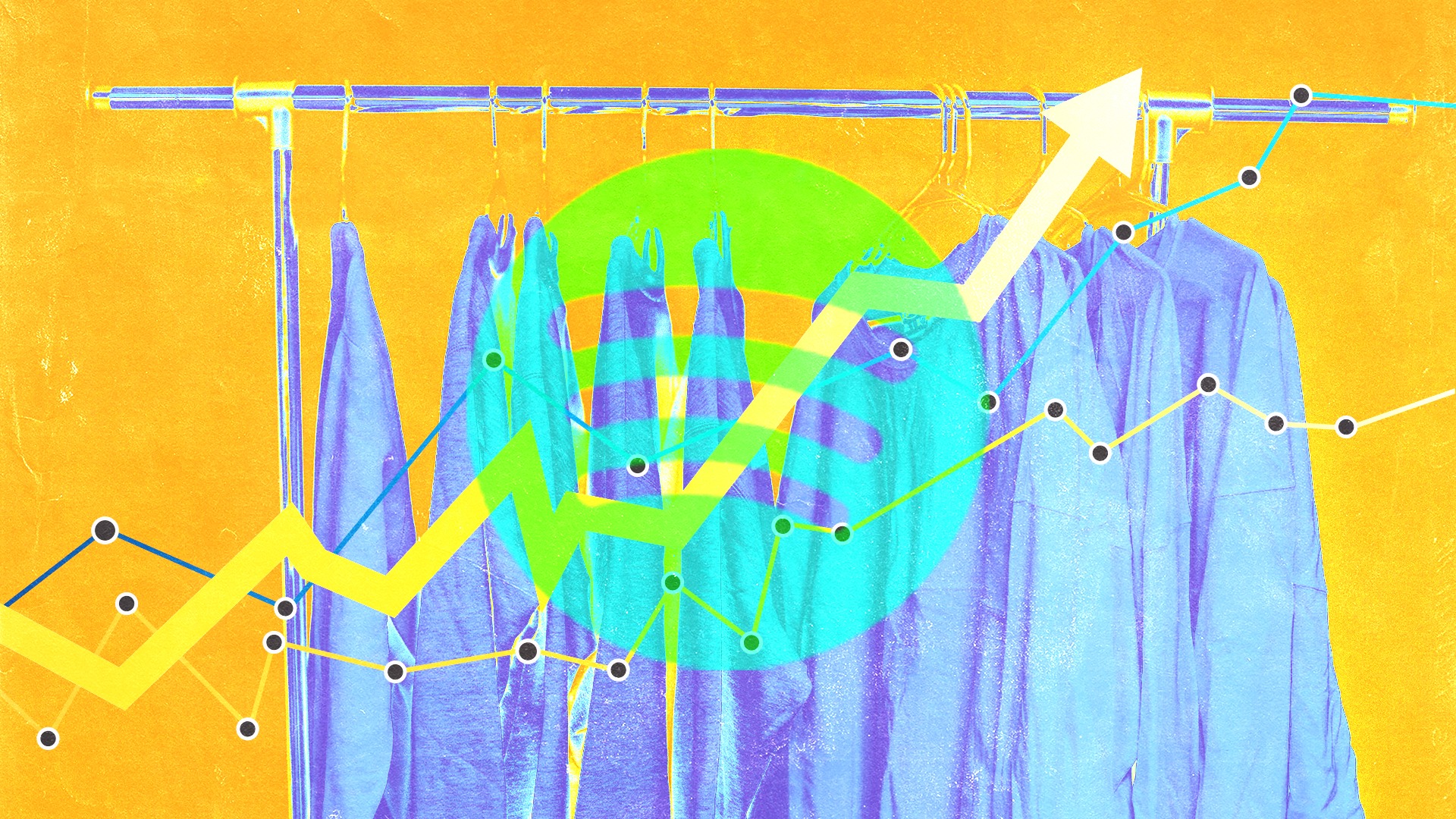
Spotify merch isn't just a revenue stream—it's a way for listeners to solidify their support and physically showcase their musical tastes.
With streaming services like Spotify evolving into multifaceted platforms, artists now have a unique opportunity to extend their creative expression into the realm of apparel, accessories, and beyond.
Especially with Spotify’s new integrations with Merchbar and the ability to showcase a variety of merch right on the artist’s profile, it’s a good time to come up with a merchandising plan.
In this article, we’ll discuss the top five tips to harness the power of Spotify for boosting merch sales, ensuring that your products don’t just exist but stand out and speak to the fans.
1. Set up an eye-catching merch display
To set up a merch store on Spotify, you must distribute your music to the platform and claim your Spotify for Artists profile.
Once you claim your profile you can set up your merch profile in the back end of Spotify for Artists.
Remember that the key to capturing a potential buyer’s attention lies in presenting your merchandise in a visually compelling way
High-resolution images that highlight the uniqueness of each item can make a significant difference.
These images must be not only clear and professional but also encapsulate the ethos of your brand.
The power of words should be considered as well. Descriptions accompanying your merch need to be more than just informative—they should be evocative and enticing.
A compelling narrative that connects the merch to your music can transform a simple item into a must-have artifact.
2. Sync your releases with merch drops
When a new album or single is on the horizon, anticipation is already building.
Introducing merchandise alongside your music capitalizes on this momentum, offering fans a more immersive experience.
A coordinated launch can act as a force multiplier, ensuring both your music and merch command attention.
The strategy lies in the build-up. Teasing upcoming releases with sneak peeks of merchandise can stir conversations and engage fans.
It’s about crafting a narrative where your merch and music releases are parts of a larger story you’re telling.
Artists have seen considerable success by bundling merchandise with pre-orders for upcoming albums, often including digital downloads as instant gratification for the purchase.
This approach not only drives sales but also reinforces the connection between the artist and their audience.
3. Diversify your Spotify merch lineup
Diversity in your merchandise assortment is not just a tactic—it’s a strategic approach to catering to a broader audience while maintaining the interest of your core fans.
Offering a range of products, from staple apparel items to more unconventional and unique merchandise, can significantly enhance your brand’s appeal.
It’s about understanding the different segments within your fanbase and providing something for everyone.
For instance, some artists expand their merch to include everything from branded instruments to cookbooks, showing a deep understanding of their audience’s lifestyle and interests.
Others have partnered with tech companies to offer branded headphones, speakers, and other gadgets that are not only practical but also deepen the fan’s connection to the music.
In essence, a diverse merch lineup speaks to the varied interests of your listeners and stands as a testament to your brand’s evolution and attentiveness to your audience’s desires.
4. Offer exclusive and limited-edition items
Limited-time offers and limited-edition merchandise can significantly amplify demand through scarcity and your fans’ desire to own something special.
This strategy not only drives sales but also adds an element of prestige to your brand.
Consider offering autographed albums, vinyl pressed in limited quantities, or special edition apparel that is available only for a short period.
These items should be marketed as must-have collectibles, emphasizing the unique opportunity to own a piece of music history.
Such exclusivity can transform fans into enthusiastic collectors and brand ambassadors who treasure these limited items.
5. Utilize Spotify’s Merchbar integration
Spotify’s integration with Merchbar makes it incredibly simple to sell merch if you haven’t already invested in making a run of t-shirts.
Merchbar offers printing and shipping services and will take care of all the logistics.
All you need to do is create an account and upload your designs.
To start using Merchbar platform here’s a step-by-step guide:
1. Set Up an Account with Merchbar:
Ensure you have an account with Merchbar, as this is Spotify’s official partner for merchandise sales.
2. Select Your Merchandise:
Choose the items you want to feature on your Spotify profile, focusing on variety and exclusivity.
3. Optimize Product Listings:
Craft compelling product descriptions and use high-quality images to represent your merchandise.
4. Link Your Merch to Spotify:
Follow Merchbar’s process to sync your inventory with your Spotify artist profile.
5. Monitor Your Spotify Merch Performance:
Keep an eye on which items are performing well and consider rotating your merchandise to keep the offering fresh.
Spotify merch can make you money
The significance of merchandising on Spotify cannot be overstated.
In an era where music is ubiquitously accessible, merch offers a tangible connection that can deepen fan engagement and open additional revenue streams.
Artists are encouraged to leverage the power of Spotify not just as a platform for streaming but as a comprehensive suite for brand expansion.
Creativity and persistence are key. The merchandising journey is one of trial and error, requiring a willingness to innovate and adapt.
Remember, merchandise is more than just a product; it’s an extension of your artistic narrative and a cornerstone of your brand.
Gear guides, tips, tutorials, inspiration and more—delivered weekly.
Keep up with the LANDR Blog.
Latest Posts
